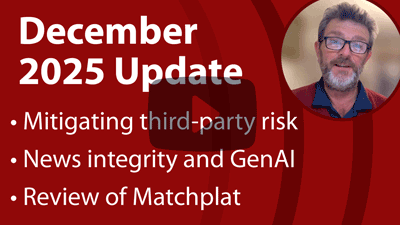 Delivery framework pricing: Understanding the workflow
Delivery framework pricing: Understanding the workflow
Jinfo Blog
4th April 2012
Abstract
"Delivery framework" pricing looks at the context in which the content is delivered to the user. Products priced through delivery framework reflect a different set of investments and risks on the part of the vendor, and a buyer will need to negotiate accordingly.
Item
This is the third in a four-part series of FreePint Features on how vendors of content products invest in product development. If you influence or negotiate contracts, you may find this approach to understanding the various levers you can pull to be useful.
A common trend in the information world is to develop content products aimed at specific business needs. Vendors assemble a foundation of content, through in-house creation, commissioning and/or licensing. However what they sell to buyers is a particular user experience – the packaging or framework that presents the content to the user.
The delivery framework pricing philosophy emphasises the focus and targeting of the interface, which may:
- Filter and present only that data that relates to a specific geography, industry or job function
- Present content within the context of a specific business task, such as PR or sales
In these cases, the investment is first of all in a set of tools or in a user experience that is highly focused. The vendor has to have a clear understanding of exactly what a user needs to do with the information, and present it within a framework that shifts some of the work burden from the user to the product. At the same time, the vendor must also invest in content, much as it would for a value metrics product.
The risks with delivery framework are greater. If the vendor misunderstands the needs of the user, the product will fail. Users have very specific requirements and increasingly demand intuitive yet powerful interfaces. Vendors using this pricing philosophy must continually reinvest in state-of-the-art user experience.
And the risk of losing content is ever-present as well.
In negotiations, a smart early adopter may secure better pricing by partnering with the vendor to help refine the framework. Adding users who need different frameworks from each other will probably not result in price savings, as the key investment the vendor makes is in developing each framework. However, adding more users to the same framework may result in cost savings.
Four-part series:
- Part 1: introduction
- Part 2: value metrics
- Part 3: delivery framework
- Part 4: consultative
Learn more about FreePint Research's benchmarking projects and request information about participating.
- Blog post title: Delivery framework pricing: Understanding the workflow
- Link to this page
- View printable version
- Consultative pricing: It's all about expertise
Thursday, 5th April 2012 - Value metrics pricing: Pricing based on basic multiples
Tuesday, 3rd April 2012 - Defining value through pricing
Tuesday, 3rd April 2012
Register for our next Community session:

Team demand and AI
22nd January 2026
Latest on our YouTube channel:
Read on the Blog:
December 2025 update
3rd December 2025
- Team roles and AI (Community) 26th February 2026
- Team demand and AI (Community) 22nd January 2026
- Transforming knowledge management at BASF – GenAI and the evolution of QKnows (Community) 10th December 2025